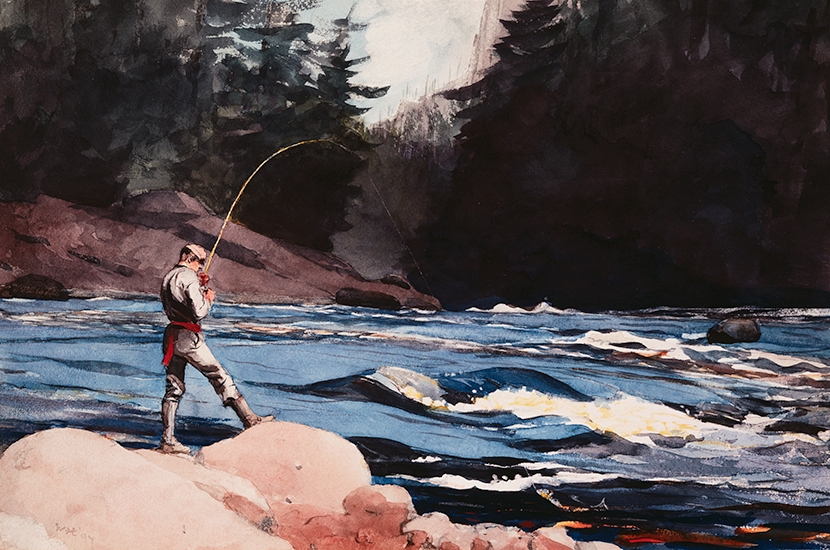The other day a friend asked me what a lascar was. Fair enough: it’s not a word you come across in everyday conversation. Perhaps he’d been reading Spike Milligan, where I last met it. A similar question struck me about the ‘unreasonable virtue’ which the American writer Mark Kurlansky sees in fly fishing. I have fished all my life and am no more or less virtuous that the next man. I searched for the answer in this book but failed to find it.
It is hard to understand why it was published. True, British writing about fly fishing has become a lackadaisical, threadbare thing. Monthly magazines are full of accounts of riverbank expeditions which end in a tussle, the angler’s rod ‘bucking like a bronco’, and eventually with a ‘bar of silver’ lying on the riverbank. Read one and you’ve read them all. American writers, such as Thomas McGuane, tend to try a bit harder.
Ah, but the covers of this book! They’re the thing — replete with a Hong Kong watercolourist’s homage to one of those big Victorian salmon flies. There’s a picture of the grey-bearded author sitting in the back of a boat. He appears perfectly normal, though for some reason he has adorned his hat with pink fluff — possibly a particularly garish salmon fly. He is holding a fish which is either very stale or partially filleted. There seems to be a golf club lying on the thwart behind him, which suggests he has his sports confused. Poor Kurlansky. He wasn’t set much of a challenge and he hasn’t covered himself in glory.
There have been dozens of fine books written by North American authors attempting to grapple with the business of pursuing trout and salmon armed only with a confection of feathers and bits of fur tied to a hook. In seeking to address the central mystery of fly fishing — why make it difficult for yourself when, in the right conditions, you could catch fish much more easily with a bait? — the transatlantic books often tend to the metaphysical. There is even rather a good one by Howell Raines, a former top honcho at the New York Times, called Fly Fishing Through the Midlife Crisis, though Kurlansky seems unaware of it.
So who is this cove posing with the disgusting looking dead fish? He wears the sort of hat you only ever see worn by the kind of American who reads the New Yorker. Appropriately enough, he is a bestselling author, whose works, such as Cod, Milk! and Non-Violence, cram many a bookshelf. Only a few minutes before this latest book, the Kurlansky machine produced another omniscient sounding volume — on the king of fish, the salmon. Less successful authors find the central enigma not how does a salmon return to its natal river after a migration of thousands of miles but how does Kurlansky do it?
The answer is by the prodigious picking of other people’s brains: he is a hack. Not that there is anything wrong with that. But the first duty of a hack is accuracy. I am told by my fishing pal Tom Fort that in the portentously titled Salmon: A Fish, the Earth and the History of a Common Fate, Kurlansky claimed that the Tweed had been wrecked by the building of dams for textile works. This is simply untrue.
If I had to attempt my own explanation of the charm of fly fishing it would be the requirement to be silent, the need for close observation and the fact that while you are striving for these two objectives, the natural world goes about its business around you. The fly fisher is free. Kurlansky ends up falling back on Norman Maclean, Ota Pavel and William Butler Yeats — all far more accomplished writers on either the subject of fishing or the mysterious ‘unreasonable virtue’ of his title.
There are dozens of lovely books about fly fishing. This is a long way short of being among them.
(P.S. A lascar was a lowly regarded stoker or sailor from India or south-east Asia. The term is supposedly of Persian origin. It is almost certainly politically incorrect.)






Comments